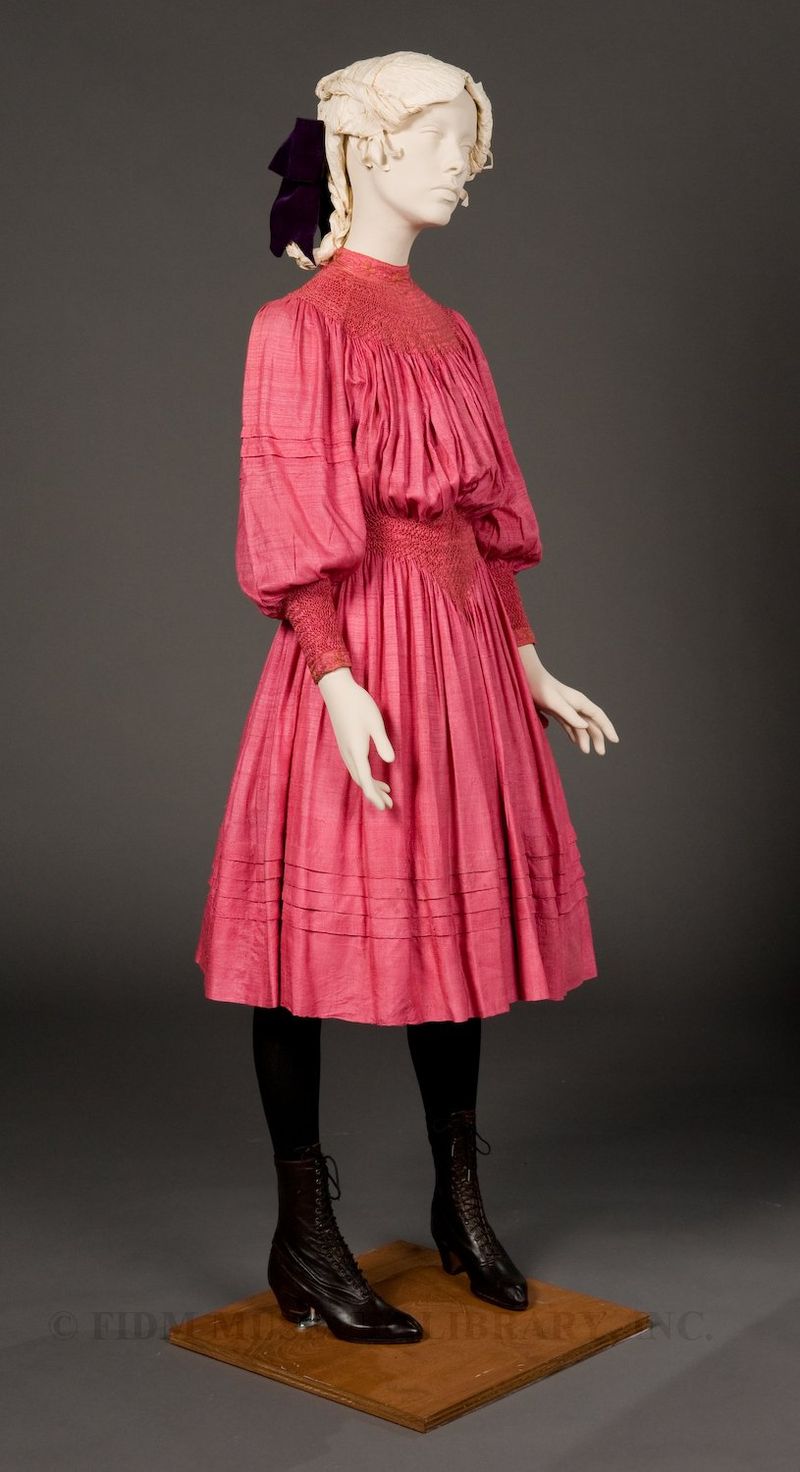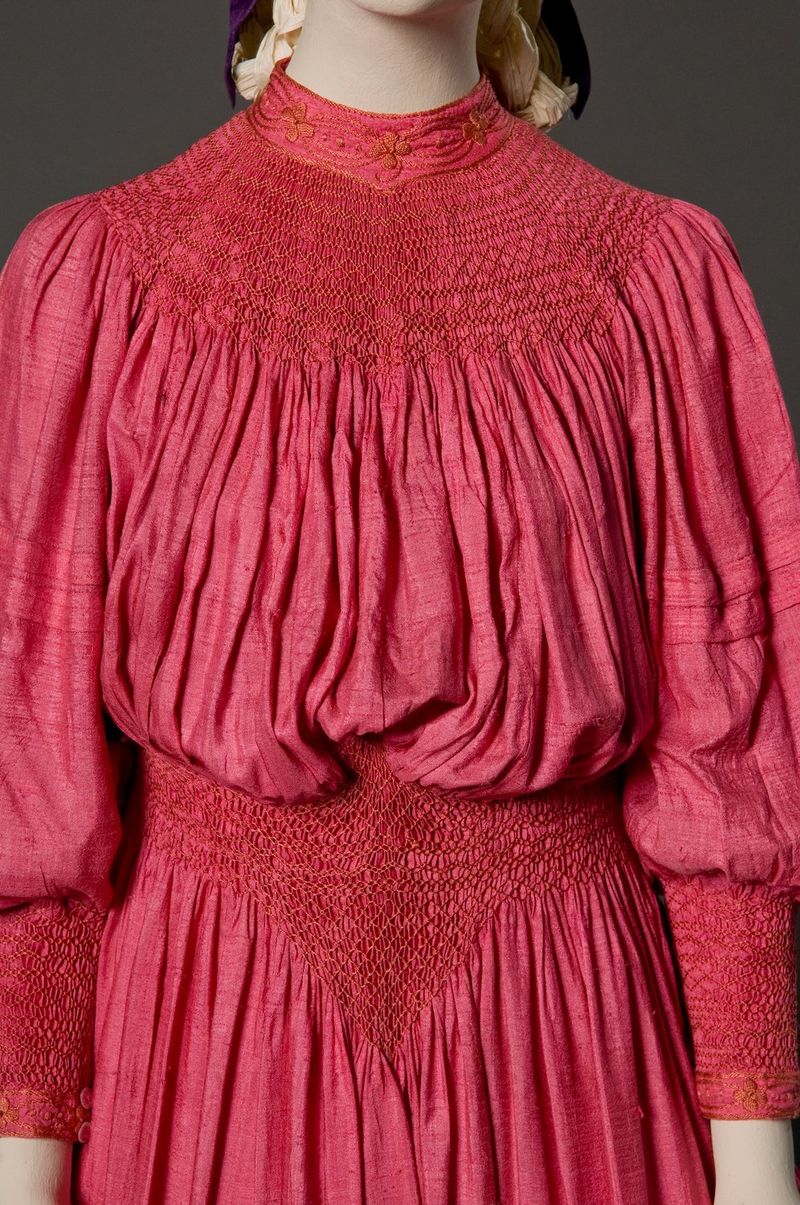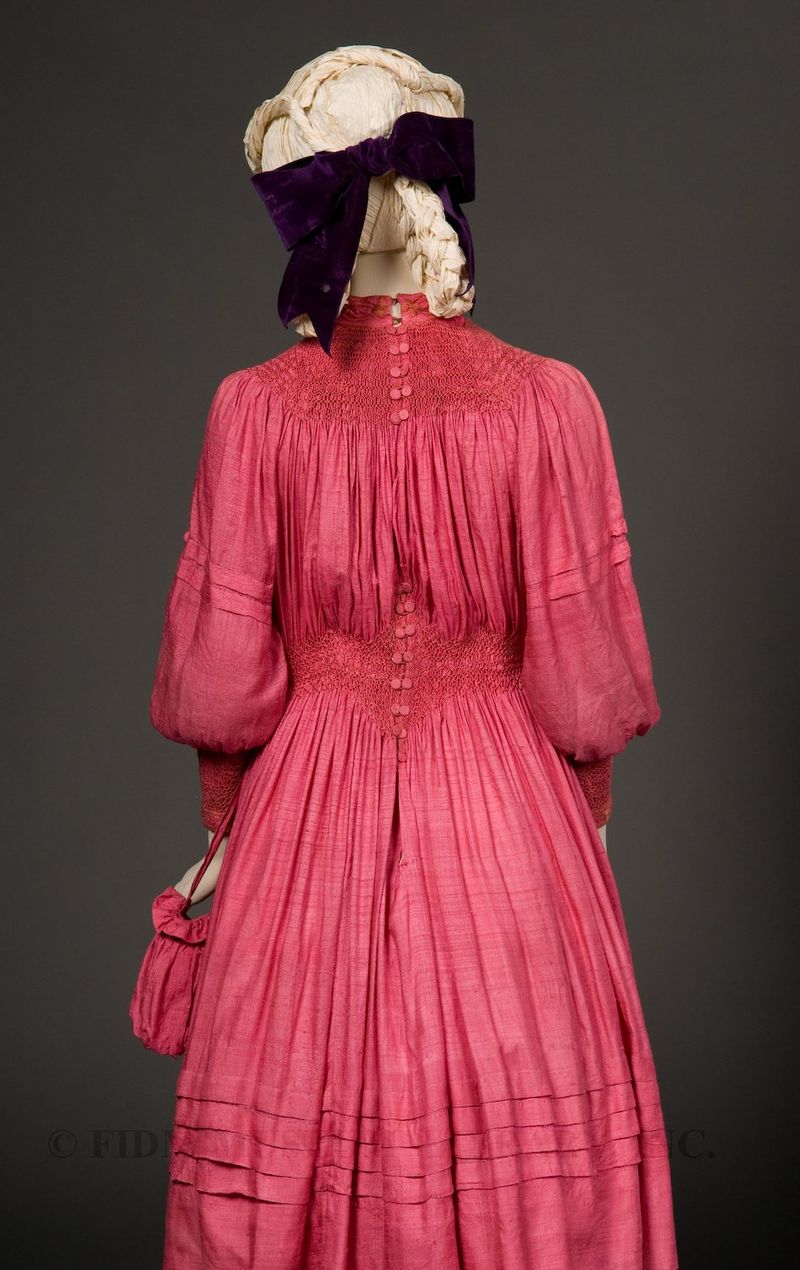Smocked frock
Between the 1750s and the late 19th century, rural Englishmen wore voluminous smocks when working outdoors. Usually made of rough homespun, most smocks had long, full sleeves and ended at mid-calf. Though entirely functional, smocks often featured decorative embroidery around the cuffs, bodice or neckline. Called smocking, it was more than mere decorative embellishment. Because smocking consisted of stitches passed over areas of gathered fabric, it created stretch in an otherwise non-stretch garment, allowing for more freedom of movement. This was important for those living in rural areas, as manual labor was an undeniable fact of life. In what could be considered an early example of work-wear influencing fashion, both smocks and smocking became an important part of fashionable dress beginning in the 1870s. Smocks were adopted by those artists and bohemians interested in alternative styles of dress. Decorative smocking appeared on garments worn by women and children, such as the young girl's day dress of pink silk seen below. Here, smocking stitches create the bodice, peaked waistline and fitted cuffs.
 Day dress Attributed to Liberty & Company, London c.1893-97 Museum Purchase 2008.25.3
Day dress Attributed to Liberty & Company, London c.1893-97 Museum Purchase 2008.25.3
Ironically, both smocks and smocking became popular among urbanites just as these sartorial traditions were losing ground among villagers. In rural areas, people were more interested in wearing garments associated with an urban lifestyle, such as tailored suits. From the perspective of those living in bustling, crowded industrial cities such as London, the supposed tranquility and perceived innocence of rural life and its traditions was extremely appealing. By clothing themselves in garments suggestive of a rural lifestyle, urbanites created an romanticized version of the countryside in the midst of modern, industrial life.
Notice the attached pouch purse at the left hip. Because of its association with innocence, smocking was thought especially appropriate for children's clothing. The illustrations of Kate Greenaway (1846-1901) were instrumental in promoting idealized rural dress for children in general and girls in particular. Greenaway's illustrations drew on historic costume sources, as well as her own experiences as a child in rural England. Wildly popular throughout the 1880s, Greenaway's images of apple-cheeked girls and boys frolicking in the English countryside influenced fashionable dress for children well into the 20th century. Between 1902 and 1912, Liberty & Company of London produced a "Kate Greenaway" line of "picturesque and fashionable dress" which drew on Greenaway's illustrations for inspiration. For illustrations of Greenaway children wearing smocked garments, click here and here. Baines, Barbara. Fashion Revivals: From the Elizabethan Age to the Present Day. Anchor Press: London. 1981.

